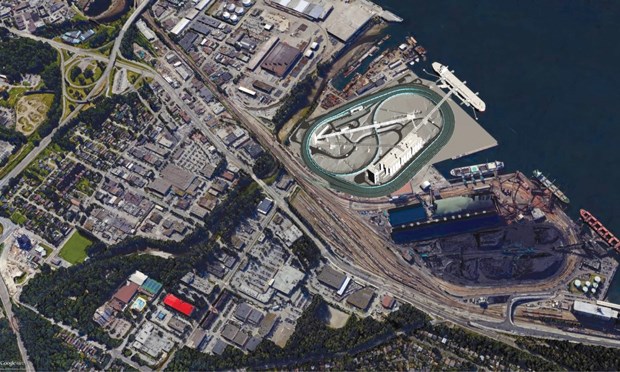Dear Editor:
Re: Neighbourhood Plan for Moodyville East, Jan. 24 front-page story.
For those taking an interest in and following developments on the industrial waterfront, the proposed higher density housing focused on families above Low Level Road in the area east of St. Davids and south of East Second Street is alarming. On Oct. 3, 1975, a major fire and explosions at the Burrard Terminal elevator, the site of the current grain terminal run by Richardson International, killed workers and rained down chunks of concrete and debris on the adjoining neighbourhood as far away as Ridgeway school.
A commission of inquiry on health and safety in grain elevators conducted by Liam Finn made a number of findings and recommendations in a lengthy report, including municipal zoning and the advisability of having people living so close to known industrial sites prone to combustion. Even though safety measures and monitoring systems have improved considerably in subsequent decades, the presence of grain dust, friction from multiple moving parts, and high-voltage power sources are still a dangerous combination.
The Richardson International grain terminal is an older facility that has been recently updated and expanded.
Given the potential blast radius in the event of an explosion, what would the estimated casualties be in built-up urban areas and is the city and district first responder emergency response adequate for such a catastrophic event? Who would be legally liable in the event of deaths?
These basic questions apply to the new G3 Terminal proposed at the Lynnterm West Gate as well. Moodyville Park at least provides a buffer for the Cargill grain terminal and the eastern part of Richardson International, but this will not be the case if the plan presented by Brent Toderian on behalf of Seacliff Properties goes ahead.
International corporations like Richardson take opportunities to renew infrastructure, and Grain Workers Local 333 (ILWU) makes sure safety regulations are scrupulously observed and dust accumulation prevented to protect their own unionized members. Who is speaking up on behalf of residents?
The city council was powerless when Port Metro Vancouver approved Richardson’s addition of another 28 silos in 2013, creating a wall of concrete for residents in the area. The
Lower Level Road project completed last year also brought more tracks serving the terminals and increased rail traffic, with the improved Spirit Trail and a small suspension bridge as a sop.
It is no surprise that so many existing homeowners in the area adjacent to the Richardson International Terminal are ready to sell, given the diminished view lines, impact on property values, constant noise and pollution, and significant risk of catastrophic industrial accident.
Chris Madsen
North Vancouver
What are your thoughts? Send us a letter via email by clicking here or post a comment below.



